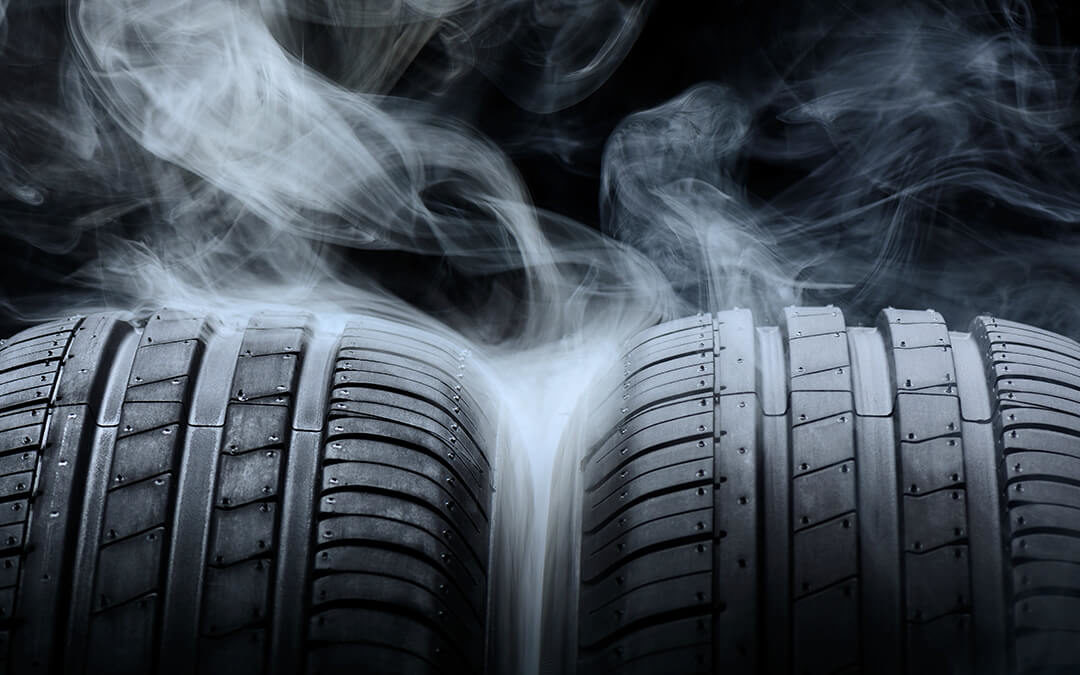(And Why Maybe You Should Too)
Increasingly, many tire shops offer “nitrogen fills” as either an option or a value-added service to drivers. Nitrogen is presented as a “better” option than just compressed air, but unless you were a chemistry major, you might not understand whether it’s a better option or just a needless upsell.
Standard “Tire Air” vs. Nitrogen Gas
Let’s start by looking at the chemical composition of compressed air and nitrogen gas.
If you used a bicycle pump or air compressor to fill your tires, that mixture is going to be made up of the same air we breathe: about 78% nitrogen, with 21% oxygen and a small amount of carbon dioxide, water vapor and some other gases.
In contrast, the compressed nitrogen gas used by filling stations is typically 9395% N2, and perhaps just as importantly, free of water vapor.
Bigger Molecules = Slower Deflation
For your average driver, the biggest benefit of nitrogen gas in tires is that N2 molecules are larger than O2 molecules, which means that nitrogen gas will leak out of your tires more slowly than standard compressed air.
Estimates of how much of a difference this makes vary. A Consumer Reports study found that the difference was only 1.3 PSI over the course of a year, representing about a 38% decrease in leakage. However, some brands of tires and older tires leaked more air and had a more noticeable benefit from using nitrogen gas.
That means that for the average driver, the biggest benefit of nitrogen gas is that it’ll keep your tires inflated at a proper pressure for a bit longer.
If you’re meticulous about checking your tire inflation regularly, it might not be a big benefit for you. If you tend to let that slide, it might be well worth paying a bit more for nitrogen.
But If You Live Life by the Quarter-Mile…
Out on the race track, things are a bit different. For a high-performance race car, a difference of 1-2 PSI per tire can be a really big difference. And nitrogen-filled race tires help keep consistent pressure over a wider variety of temperatures.
Consider this: over 30 minutes of highway driving, tires can increase in temperature by around 50°. So, if you start driving on an 80° day, after a half-hour your tires are likely 130°. If you remember your high school chemistry class, gases tend to expand as they warm up.
Oxygen and nitrogen are pretty similar in this regard, but the water vapor in standard compressed air is the problem.
In our imaginary drive above, when we start out on an 80° day, the water pressure in tires filled with compressed air would be 3.36 kPa. By the time the tires got up to 130°, that pressure would be closer to 15 kPa. Over the course of a 30-minute highway drive, the pressure exerted by the water vapor in a pair of normal tires would increase by about a factor of 5.
Now, on a normal passenger car, that’s not a big deal, and is still well within the design range of your car and tires. On a race car in a high-performance situation, it could represent a noticeable performance issue.
There are other reasons why race crews like nitrogen. It’s inert and less flammable than oxygen, which could be helpful in an accident in the pit or during a wreck. Carrying compressed nitrogen cylinders also means that pit crews don’t need to power air compressors.
Should You Put Nitrogen in Your Tires?
If you’re careful about car maintenance and check your tire pressure regularly, you can certainly get by with normal compressed air in your tires. If you tend to let things slide, nitrogen can make sure that your tires stay at the proper pressure longer.
If your tire shop charges for nitrogen fills, you’ll have to decide if it’s worth it for you. If they add it as a free service when you buy a new set of tires, then it’s an awfully nice feature to have.
Oh, and if you’re heading to the autocross track on the weekends and looking for nitrogen cylinders for your pit crew, we’d be happy to help.
